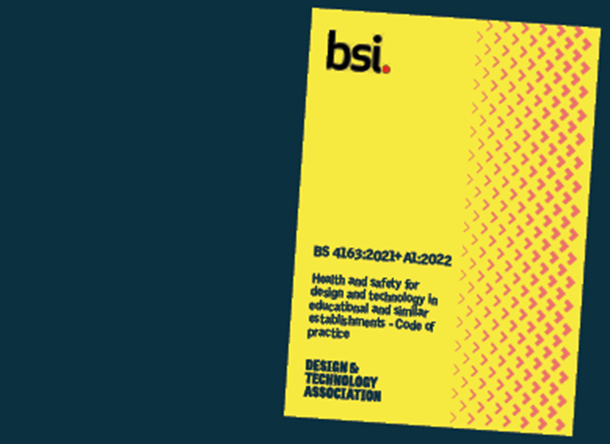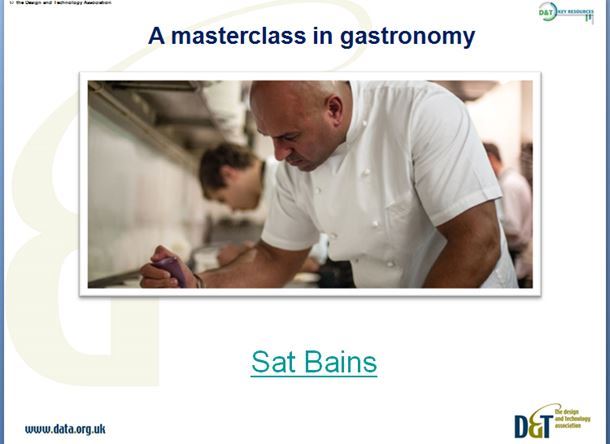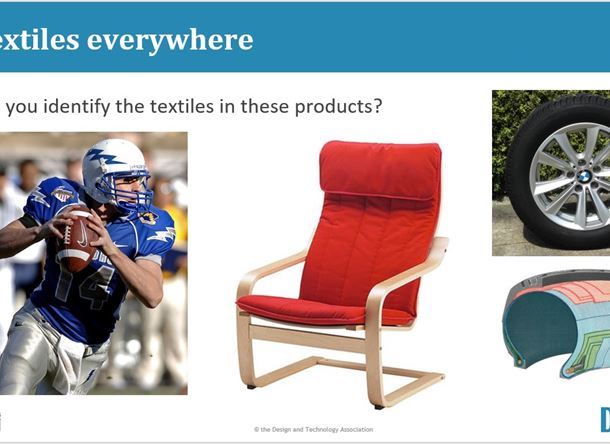The use of specific machinery and equipment by students in school workshops
Schools and colleges should follow the guidance provided in ‘BS4163:2021 Health and safety for design and technology in educational and similar establishments – Code of practice’.
The school or similar establishment should decide which machinery is suitable for use by each group of learners. The decision should be based on student maturity and competence, the level of supervision, and local authority/employer and national guidelines. In general:
- learners should be trained and instructed in safe operating methods by a competent person, who has attended a recognized training course;
- learners should be assessed as mature and competent before operating the machinery, and should be continuously supervised.
Learners should only work in a high-risk area when it is fully under the control of a person competent to work in the area (i.e. a person with demonstrated competency through the D&T Association training scheme) and, where appropriate, risk assessments have been carried out taking into account the learners’ capabilities. For specific higher risk activities, training and assessment of individual learners is necessary and training records should be kept. Risk assessments should be carried out on the requirements of learners, in particular those with special needs, learning or behavioural difficulties, or those who do not have English as their first language.
The decision therefore as to which machinery and equipment, and the appropriate age at which individual students should be allowed to use specific machinery and equipment, should follow this guidance and must take into account both student and staff capability as well as local authority/employer and national guidelines.
Exception - Following a series of discussions and serious consideration the Design and Technology Association would like to make clear its stance on the following:
- Students under the age of 16 using a band saw.
- Although in BS4163:2021 it states clearly that …… “Learners should only use band saws when they have been assessed and the assessment has shown that they are competent, and they are under the direct supervision of specifically trained employees”
…… the Design and Technology Association strongly recommends that no student under the age of 16 should use one, supervised or otherwise. It is felt that the risk of severe injury far outweighs the possible benefits from its use.
If the school/centre decides not to follow this recommendation which goes further than the regulation described in BS4163:2021, please ensure that:
- they are fully aware of the Association’s stance and reiterate the need for full risk assessments to have been completed and recorded;
- planned training, records of the training must be kept;
- when the student is using a band saw, they must be under the direct and close supervision of a suitably trained staff member.
Section 4 of BS4163:2021 provides more detailed information in relation to the use of specific machinery and equipment which should be followed, e.g.:
In relation to the use of portable power tools it notes that:
‘Learners should be physically capable of using portable tools, and supervised at all times by a trained, competent person.’ (page 50)
7 named high risk portable power tools, i.e. portable angle grinders, circular saws, biscuit jointers/tenon jointers, reciprocating saws, multi-tools, planers and routers, also carry an additional warning, i.e.:
‘Learners should only use these machines when they have been assessed and the assessment has shown that they are competent, and they are under the appropriate supervision of specifically trained employees.’ (pages 50 to 58)
In relation to the use of woodworking machinery it notes that:
‘Moulding machines should not be used in schools and sixth form colleges.’ i.e. Spindle Moulders (page 70)
‘Learners in schools and sixth form colleges should not use planing and thicknessing machines.’ (page 72)
‘Learners should only use band saws when they have been assessed and the assessment has shown that they are competent, and they are under the direct supervision of specifically trained employees.’ (page 76)
‘Learners in schools and sixth form colleges should not use circular sawing machines. Learner use should be restricted to those in further education who are following a recognized training course in wood machining, and learners in teacher training establishments who are being trained in the safe use of workshop machines.’ (page 77)
Learners should only use chop and radial arm saws when they have been assessed and the assessment has shown that they are competent, and they are under the direct supervision of specifically trained employees.’ (page 80)
‘Learners in schools and sixth form colleges should not use vertical panel circular sawing machines. Student use should be restricted to learners in further education who are following a recognized training course in wood machining, and learners in teacher training establishments who are being trained in the safe use of workshop machines.’ (page 82)
‘Only competent persons should use mitre trimmers.’ (page 85)
In relation to the use of metalworking machinery it notes that:
‘Only a competent trained person should supervise the use of centre lathes. The trained person should be trained in accordance with the Health and Safety Training Standards in Design and Technology [N1], or hold other recognized qualifications to industry standards.’ (page 85)
‘Only a competent trained person should supervise the use of milling machines. The trained person should be trained in accordance with the Health and Safety Training Standards in Design and Technology [N1], or hold other recognized qualifications to industry standards.’ (page 87)
‘The competent person should be trained in accordance with the Health and Safety Training Standards in Design and Technology, or hold other recognized qualifications to industry standards.’ (Grinding machines, page 91)
‘Learners should only use metal sawing machines when they have been assessed and the assessment has shown that they are competent, and they are under the direct supervision of specifically trained employees.’ (page 96)
‘Learners should be made aware of hazards associated with processes, equipment and precautions that should be taken during use. Learners should be assessed as competent before using the equipment, a record of their training should be kept and they should be supervised at all times by a trained, competent person.’ (Motor vehicle work, page 132)
‘Only competent employees should operate lifting equipment.’ (Vehicle lifts and hoists, page 136)
‘As they are not appropriate in schools and similar establishments, inspection pits should not be used. (page 137)
‘Learners should be assessed as competent before using wheel balancing machines and machines should only be used under the direct supervision of a competent person.’ (page 137)
‘Learners should be assessed as competent before using tyre changing machines and machines should only be used under the direct supervision of a competent person.’ (page 138)
‘Learner use should be restricted to those in further education who are following a recognized training course in motor vehicle repair and learners in teacher training establishments who are being trained in the safe use of workshop machines.’ (Rolling roads, page 139)
‘Suitable and sufficient training should be carried out before using the equipment.’ (Hot air plastics welding, page 118)
‘Persons supervising work in welding areas should be trained to a standard as specified in the Health and Safety Training Standards in Design and Technology, or should have equivalent recognized qualifications to industry standards.’ (Welding, page 102)
‘Casting equipment should only be used under supervision of a competent teacher with training at least to the standard specified in the Health and Safety Training Standards in Design and Technology, or who has equivalent recognized qualifications to industry standards.’ (Casting, page 109 and Low temperature casting, page 110)
‘Only a competent person trained to use the equipment, and who has a secure knowledge of the process and the associated hazards, should carry out centrifugal casting.’ (page 111)
‘Only a competent person trained to use the equipment should carry out vacuum and pressure casting of metals.’ (page 112)
‘Only a competent teacher or technician should prepare acid solutions.’ (Pickling and acid etching of metals, page 121)
‘Learners should not handle powder of very reactive dyes.’ (Dyes, page 122)
‘Tests on fibres and fabrics should not be carried out by learners below year 9. Learners below year 12 should not carry out tests with corrosive chemicals.’ (Testing fibres and fabrics, page 123)
Join Now
Design and Technology (D&T) is the inspiring, rigorous and practical subject which prepares all young people to live and work in the designed and made world.
We are focused on giving you the tools, knowledge and information you need to become more effective, more experienced and more efficient. Giving you access to expert opinions. And creating a place where you can air your views, ask your questions and so help make a difference to your life and those of your pupils. We want to hear from you. We want to know how we can help. And we want you to join us.






